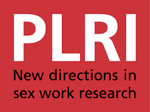Article in Sex. Transm. Infect. 2011;87:263.
Objective To ascertain the cost effectiveness of targeted interventions for female sex workers (FSW) under the National AIDS Control Programme in India.
Methods A compartmental mathematical Markov state model was used over a 20-year time horizon (1995–2015) to estimate the cost effectiveness of FSW targeted interventions, with a health system perspective. The incremental costs and effects of FSW targeted interventions were compared against a baseline scenario of mass media for the general population alone. The incremental cost-effectiveness ratio was computed at a 3% discount rate using HIV infections averted and disability-adjusted life-years (DALY) as benefit measures. It was assumed that the transmission of the HIV virus moves from a high-risk group (FSW) to the client population and finally to the general population (partners of clients).
Result Targeted interventions for FSW result in a reduction of 47% (1.6 million) prevalent and 36% (2.7 million) cumulative HIV cases, respectively, in 2015. Adult HIV prevalence in India, with and without (mass media only) FSW interventions, would be 0.25% and 0.48% in 2015. Indian government and development partners spend an average US$104 (INR4680) per HIV infection averted and US$10.7 (INR483) per DALY averted. Discounting at 3%, FSW targeted interventions cost US$105.5 (INR4748) and US$10.9 (INR490) per HIV case and DALY averted, respectively.
Conclusion At the current gross domestic product in India, targeted intervention is a cost-effective strategy for HIV prevention in India.
(abstract author’s own)
Theme:
Author:
Shankar Prinja, Pankaj Bahuguna Shalini Rudra, Indrani Gupta, Manmeet Kaur, S M Mehendale, Susmita Chatterjee, Samiran Panda, Rajesh Kumar

